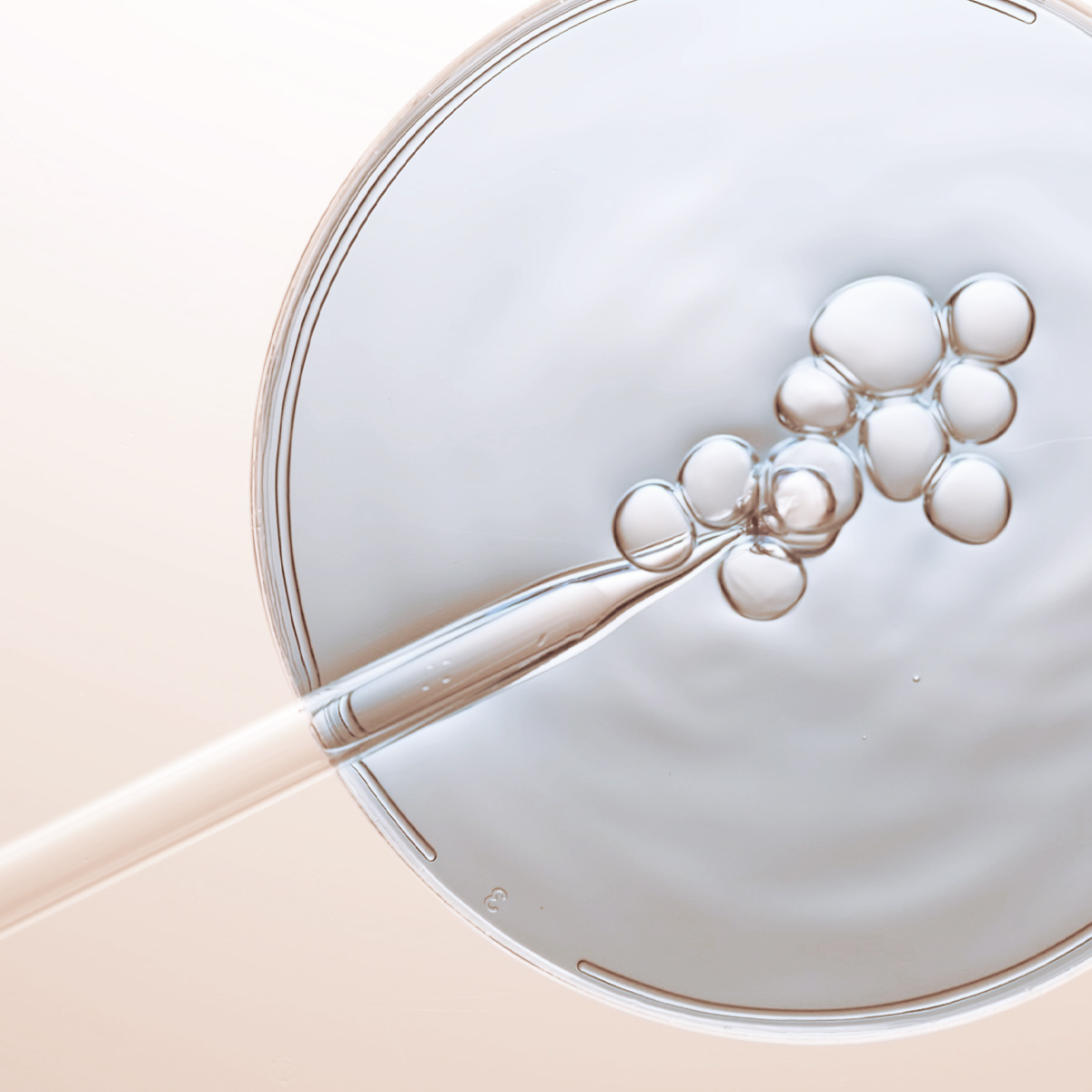S²RM® CORE TECHNOLOGY
Utilizing innovative technology, NeoGenesis skin and hair care products are more advanced than anything else available on the market today
BIOREGENERATIVE SCIENCES, INC.
BioRegenerative Sciences, Inc. has developed a patented technology called Stem Cell Released Molecules (SRM), and has designated the term S²RM® to reflect that SRM is derived from two or more types of stem cells. This S²RM® Technology mimics our body’s natural repair processes and centers on the identification, selection, culture, and stimulation of the appropriate adult human stem cell types and the capture of those molecules released from the stem cells into a therapeutic formulation.

GROUNDBREAKING TECHNOLOGY
The S²RM® Technology has the advantage compared to other stem cell technologies of capturing a full and natural complement or “system” of known molecules. The key to our technology is using the correct set of adult stem cell types that are resident in the skin, not stem cell types from other parts of the body that serve functions other than to maintain and heal the skin.
Other technologies use the “one size fits all” approach, where for example, one stem cell type from bone marrow or fat is used to develop the molecules for treating the skin. Such uninformed technologies will provide sub-optimal results in the skin given that those cells provide molecules to rebuild structures other than the skin.
BioRegenerative Sciences, Inc. has licensed this groundbreaking technology to NeoGenesis Inc. for the development of an exceptional collection of skin and hair care products that are more advanced than anything else on the market today.
CHOOSING HEALTHY PRODUCTS
Here are some specific recommendations when choosing healthy products for the skin and hair.
RESEARCH INGREDIENTS
Avoid beauty products that contain toxic ingredients, such as benzene, mineral oils and endocrine-disrupting chemicals that increase cancer risk, such as the paraben preservatives. Learn more: IARC Monographs
You may also want to read the Toxic Twelve website.
Dr. Maguire has published an article on the proper choice of ingredients in skin care products to control inflammation.
We recommend carefully reading labels for specific information on a product’s ingredients.
Do not rely on claims such as “organic” or “natural.” A USDA-certified organic seal, even if the product lives up to the claim, means 95% or more organic ingredients. However, a claim of “made with organic ingredients” or “made with natural ingredients” only means the product contains some limited amount of organic ingredients, still leaving plenty of room for harmful ingredients.

INGREDIENTS TO AVOID
Regardless of the brand, some products and/or ingredients are harmful. Here’s a short list of some ingredients to avoid:
- Hair dyes, which can contain hormone disruptors like resorcinol. According to the World Health Organization, resorcinol “In animal studies, the toxicological effects reported to be caused by administration of resorcinol include thyroid dysfunction, skin irritation, CNS effects, and altered relative adrenal gland weights. In some studies, Resorcinol decreases in body weight gain and decreased survival were noted.
- Anti-aging creams with BHA on the label. Butylated hydroxyanisole (BHA) is reasonably anticipated to be a human carcinogen based on sufficient evidence of carcinogenicity from studies in experimental animals.
- Liquid hand soaps with triclosan/triclocarban. Animal studies have shown that triclosan alters hormone regulation.
- Nail polish and removers with formaldehyde, DBP or toluene (which can be contaminated with benzene). Benzene causes harmful effects on the bone marrow and can cause a decrease in red blood cells, leading to anemia. It can also cause excessive bleeding and can affect the immune system, increasing the chance for infection. The Department of Health and Human Services (DHHS) has determined that benzene causes cancer in humans. Long-term exposure to high levels of benzene in the air can cause leukemia, cancer of the blood-forming organs.
- Skin lighteners with hydroquinone. According to the FDA, “ hydroquinone may act as a cancer-causing agent (carcinogen) in rodents (rats and mice) after oral administration. Hydroquinone also has been linked with a medical condition in humans known as ochronosis (skin darkening and disfiguration) when it is applied topically.”
- Heavily scented products. Again, fragrance is a concern because of all the possible unidentified ingredients. Avoid synthetic fragrance. The term “fragrance” on the label of a cosmetic means that the product can contain many types of fragrant chemicals. These chemicals may contain hormone-disrupting phthalates and synthetic musks. Many fragrance manufacturers claim their formulas are confidential business information, and keep them secret from the consumer, as well as the companies that sell their products. Until the law is changed so that consumers are fully informed about what’s in our products, it’s best to avoid synthetic fragrance and opt for products that are fragrance-free or that fully disclose their fragrance ingredients. At NeoGenesis we use only natural essential oils and no synthetic fragrances.
- Moisturizers, ointments, and skin creams with petrolatum (which can be contaminated with Polycyclic Aromatic Hydrocarbons PAHs, a type of benzene molecule). Benzene causes harmful effects on the bone marrow and can cause a decrease in red blood cells, leading to anemia. It can also cause excessive bleeding and can affect the immune system, increasing the chance for infection. The Department of Health and Human Services (DHHS) has determined that benzene causes cancer in humans. Long-term exposure to high levels of benzene in the air can cause leukemia, cancer of the blood-forming organs.
- Fungicides, shaving creams, hair gels and hair coloring containing nonylphenol. Nonylphenol is a toxic xenobiotic compound classified as an endocrine disrupter capable of interfering with the hormonal system of numerous organisms.
- Hair spray, gel, mousse or shaving cream that contains isobutane, a propellant that can be contaminated with 1,3-butadiene. Epidemiological studies of workers in rubber plants have shown an association between 1,3-butadiene exposure and increased incidence of leukemia. Animal studies have reported tumors at various sites from 1,3-butadiene exposure. EPA has classified 1,3-butadiene as carcinogenic to humans by inhalation.

